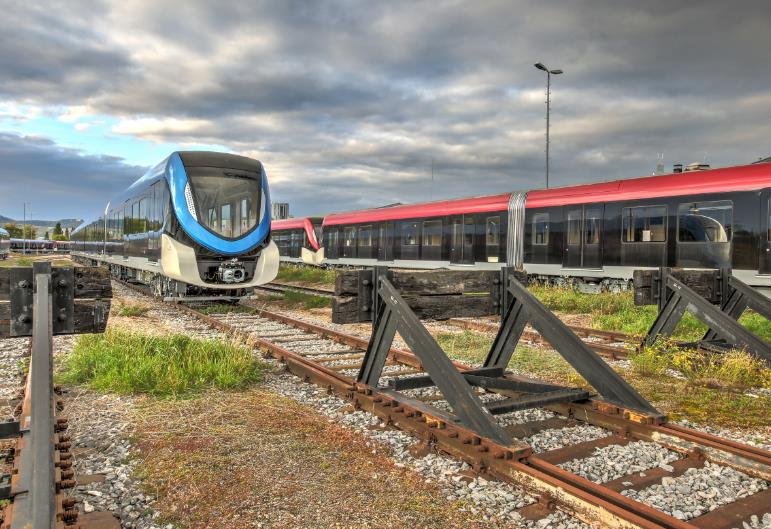The Kuwait-Saudi Arabia railway link, a landmark project aimed at enhancing connectivity and economic integration between the two nations, is set to launch in 2026. This ambitious initiative, approved by the Project Management Committee between Kuwait and Saudi Arabia, will span approximately 500 kilometers, facilitating the transportation of passengers and goods. The railway is expected to significantly boost trade and travel efficiency, offering a high-speed alternative to existing modes of transport.
The Kuwait-Saudi Arabia railway link is designed to strengthen the economic ties between the two countries by providing a reliable and efficient transportation network. The project, which has undergone extensive financial, economic, technical, and social feasibility studies, aims to transport 3,300 passengers daily with six round trips. The high-speed trains will cover the distance in approximately one hour and 40 minutes, making it a competitive option compared to air and road travel.

The railway will start from the Shaddadiyah area in Kuwait and extend to Riyadh, Saudi Arabia, enhancing regional connectivity. This project is part of a broader strategy to integrate the economies of Kuwait and Saudi Arabia, fostering trade and investment opportunities. By reducing travel time and costs, the railway link is expected to attract businesses and tourists, contributing to the economic growth of both nations.
In addition to passenger transport, the railway will facilitate the movement of goods, boosting trade efficiency. The project is expected to create new logistics hubs and streamline supply chains, making it easier for businesses to operate across borders. This enhanced connectivity will also support the development of new industries and services, driving economic diversification and resilience.
Technological and Environmental Considerations
The Kuwait-Saudi Arabia railway project incorporates advanced technologies to ensure safety, efficiency, and sustainability. The high-speed trains will be equipped with state-of-the-art systems for navigation, communication, and control, ensuring a smooth and reliable service. The project also includes the construction of modern stations and maintenance facilities, designed to meet international standards.
Environmental sustainability is a key consideration in the design and implementation of the railway. The project aims to minimize its carbon footprint by using energy-efficient technologies and renewable energy sources. The high-speed trains will reduce the reliance on fossil fuels, contributing to the reduction of greenhouse gas emissions. Additionally, the railway will help alleviate traffic congestion on roads, further reducing environmental impact.
The project also includes measures to protect local ecosystems and biodiversity. Environmental impact assessments have been conducted to identify and mitigate potential risks, ensuring that the railway operates in harmony with the natural environment. These efforts reflect the commitment of Kuwait and Saudi Arabia to sustainable development and environmental stewardship.
Future Prospects and Regional Impact
The Kuwait-Saudi Arabia railway link is expected to have a transformative impact on the region, enhancing connectivity and fostering economic growth. The project is part of a series of initiatives aimed at strengthening the historical and economic ties between the two countries. By providing a modern and efficient transportation network, the railway will support the development of new industries and services, creating jobs and boosting economic resilience.
The success of the railway project could pave the way for further infrastructure investments in the region. The enhanced connectivity and economic integration will attract international investors, driving growth and development. The project also aligns with the broader goals of regional cooperation and integration, contributing to the stability and prosperity of the Gulf region.
Public awareness and engagement are crucial to the success of the railway project. By informing and involving local communities, the project can ensure that it meets the needs and expectations of its stakeholders. This collaborative approach will help build support for the project and ensure its long-term sustainability and impact.
In conclusion, the Kuwait-Saudi Arabia railway link represents a significant step forward in enhancing regional connectivity and economic integration. The project combines advanced technologies and sustainable practices to create a modern and efficient transportation network. As the railway prepares to launch in 2026, it promises to transform the economic landscape of the region, driving growth and development for years to come.
